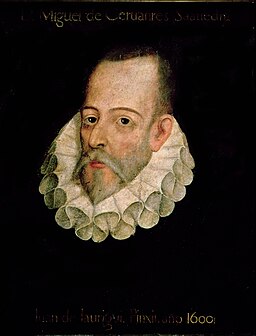Don Quixote and The Story of the Stone (Dream of the Red Chamber)
We're the ideal place for homework help. If you are looking for affordable, custom-written, high-quality and non-plagiarized papers, your student life just became easier with us. Click either of the buttons below to place your order.
Order a Similar Paper
Order a Different Paper
Don Quixote and The Story of the Stone (Dream of the Red Chamber) are both stories that look at the way life “used to be.” Using examples from the stories, please answer the following question in a two to three paragraph response.
- How do these stories treat the past with regard to the present of the story itself?
- Is the past held in high regard or is it seen as being something better forgotten than remembered?
- In what ways does the Eastern Asian
perspective compare to our modern Western perspective? - What do you think the difference tell us about
Eastern Asian society of the Early Modern period?
https://www.gutenberg.org/cache/epub/9603/pg9603.h…
The Story of the Stone / The Dream of the Red Chamber
 Relatively little is known about Cao Xueqin’s life. His family served in low-level government positions under the Qing emperors, but in his early teens, Xueqin’s family fortunes shifted. Their land and property was seized and they had to fend for themselves among the poorest levels of the common people.
Relatively little is known about Cao Xueqin’s life. His family served in low-level government positions under the Qing emperors, but in his early teens, Xueqin’s family fortunes shifted. Their land and property was seized and they had to fend for themselves among the poorest levels of the common people.
Xueqin’s The Story of the Stone (or The Dream of the Red Chamber) was likely started sometime between 1740 and 1750. It was unfinished when Cao died, but it was later taken up again and revised and expanded by a writer by the name of Gao E, finally published in 1791. It has become known as one of the four greatest Chinese novels of all time. It still has a popular following today. This story is believed to be semi-autobiographical, as it uses the rise and decay of a family that suffered similar circumstances to Cao Xueqin’s own family.
In the first chapter, we see that it is intended to be a memorial to the women of the narrator’s youth: friends, relatives and servants. Like most Chinese novels, this one is quite long, longer than most in fact. It also has a huge cast of characters, and displays a wide range of psychological and emotional experiences. It is often noted particularly for its precise and detailed observation of the life and social structures typical of 18th-century Chinese aristocracy.
This is a story set in a world of metaphysical beings and humans, and it examines the story of an extended family, mostly from the perspective of the women. All the while, it explores questions about the nature of love and lust, the differences between female and male understanding of the world, the impact of power and money, and the differences between truth and illusion.
Now, read the following selections from Don Quixote:
- Part I (Chapters 1 – 8) – http://www.gutenberg.org/files/35993/35993-h/35993-h.htm#CHAPTER_I
- Part 2 (Chapters 64 – 65) – http://www.gutenberg.org/files/35993/35993-h/35993-h.htm#CHAPTER_LXIV
- Part 2 (Chapters 73 – 74) – http://www.gutenberg.org/files/35993/35993-h/35993-h.htm#CHAPTER_LXXIII
As you read, look for the way that Cervantes places the ideas of reason against the moral conviction of Quixote. On one side of Quixote’s quests lies the world of
Miguel de Cervantes published the first part of Don Quixote in 1605. It was such a success that his characters became well-known throughout Spain. As a result, when a sequel to his book was published by someone else, he wanted to be sure that the characters remained true to his vision, so he wrote his own “authorized” sequel (part 2), which was published in 1615. Don Quixote is a literary work that uses fiction to call into question many of the accepted truths in his own society.
Cervantes’ life was full of adventure: He was a student, a soldier, a captive, and a tax-collector for the king. He was able to see royalty close at hand, but he was relatively poor, and so he had a different perspective than most of the nobility in Early Modern Spain.
At the time, Spain had a lot of influence in the world. During the Renaissance, Spain had established trade routes and territorial possessions throughout the New World, Africa, and Asia, as well as Europe. However, near the end of the 16th century, Spain’s greatness was waning. The defeat of
The assigned readings in Don Quixote reveal Cervantes’ intention to parody (an imitation of the style of a particular writer, artist, or genre with deliberate exaggeration for comic effect) the romantic books of chivalry. They also reflect the questioning that Cervantes does about the changing situations in Spain: the increasing levels of poverty in Spain, including the nobility; fighting wars that seemed to have no purpose directly

Do you need academic writing help? Our quality writers are here 24/7, every day of the year, ready to support you! Instantly chat with a customer support representative in the chat on the bottom right corner, send us a WhatsApp message or click either of the buttons below to submit your paper instructions to the writing team.
Order a Similar Paper
Order a Different Paper



